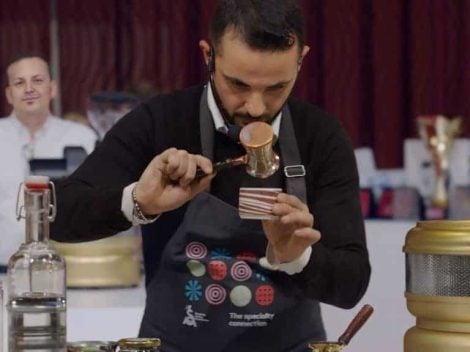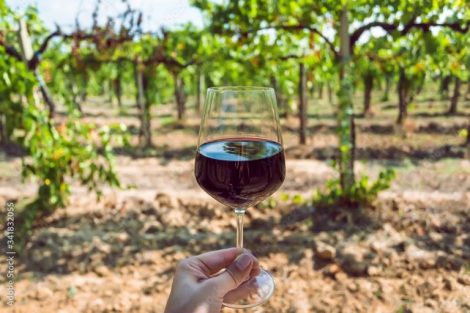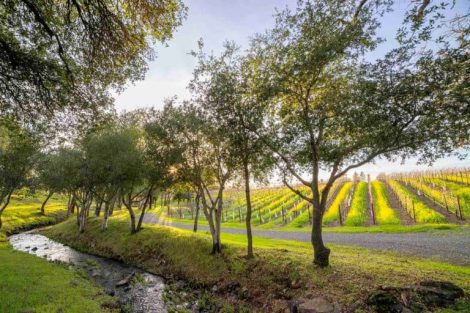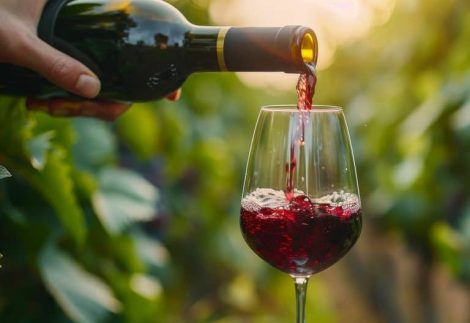Diverse soils and microclimates, an extraordinary variety of styles, the dynamism and innovative spirit of producers—these are the ingredients that have elevated Tuscany’s wine scene, ensuring its success both on the domestic wine market and, more importantly, internationally. Among the many wine-producing areas in the region—from Maremma to Bolgheri, from Montalcino to San Gimignano, and through Montepulciano and Cortona (to name just a few)—one has gained increasing prominence, both in our lists of wines awarded the prestigious Tre Bicchieri and in the hearts of wine enthusiasts. That is Chianti Classico, unquestionably one of the most dynamic and forward-thinking denominations in the entire region.
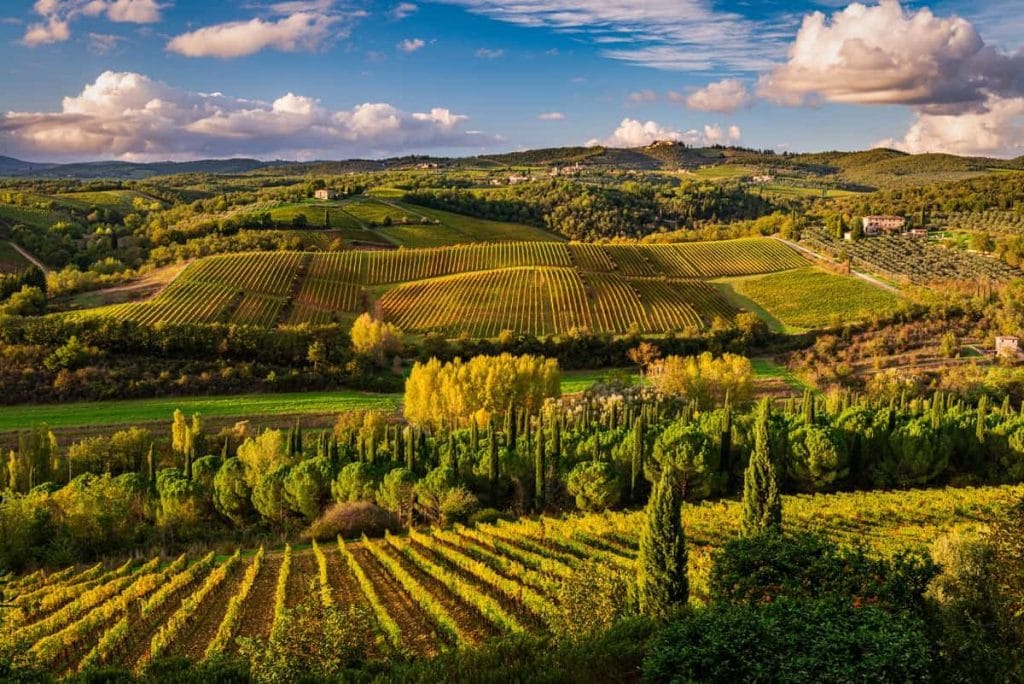
Chianti Classico: the denomination and wine characteristics
Under the watchful eye of the Black Rooster (Gallo Nero) , the historic symbol of the denomination, the Chianti Classico area stretches across a diverse landscape. The scenery varies from high wooded hills, with a climate more akin to continental regions, to valleys where Mediterranean influences emerge more prominently. Here, small artisan producers and young enthusiasts eager to make their mark interact with historic,well-establishedwineries —some owned by noble wine-producing families with generations of experience, others the result of significant investments, yet always approaching the region with the utmost respect.
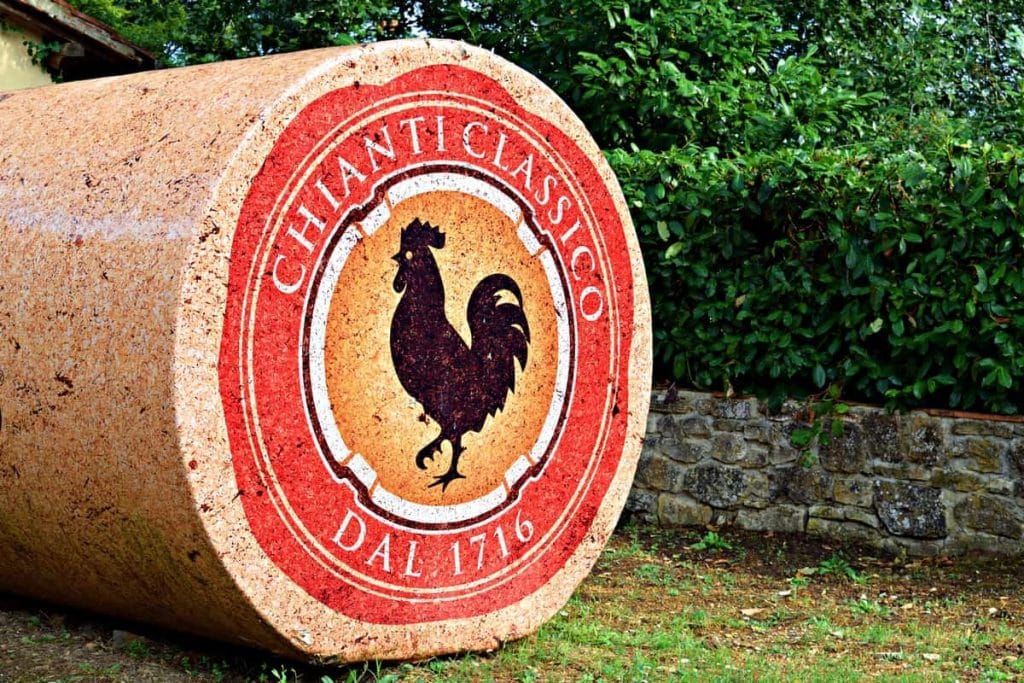
The defining traits of Chianti Classico wines, particularly over the past decade, align with what a contemporary wine should embody. Finesse, drinkability, elegance, and smoothness intertwine to create reds with a unique and distinctive character. In the best versions, the structure harmoniously balances tannins, acidity, and savoury energy.
It would be a mistake to assume that these qualities are found only in Gran Selezione or Riserva wines. One of the remarkable aspects of Chianti Classico is that even the “base” wines frequently display a strong sense of identity, embodying all the characteristics described above, with depth and the potential to age gracefully, revealing new nuances over time. Another major advantage is that these wines are often very reasonably priced.
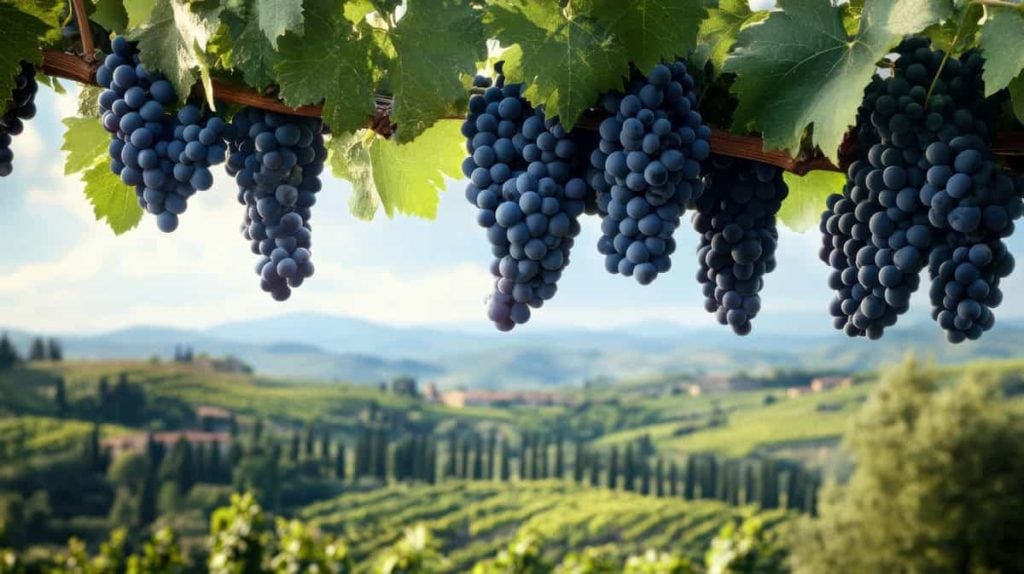
The best quality-price Chianti Classico wines
The following list highlights our top Chianti Classico tastings. These selections are included in the Berebene 2025 and Vini d'Italia 2025 guides by Gambero Rosso.
Seeking absolute models in the wine world is always a mistake, but on this occasion, we feel confident in presenting Chianti Classico '21 from Pomona as a benchmark. A deliciously drinkable wine, its flavour profile is driven by juicy fruit that plays harmoniously with its acidity. Aromas are direct and expressive, moving from lush fruitiness to delicate floral touches, with underlying notes of earth and undergrowth.
The Chianti landscape is one where vineyards share the scene with olive groves and woodlands. It’s also the Chianti Classico experience you hope for in the glass: airy and vibrant on the nose, with lush fruit refreshed by citrus and aromatic herb notes; taut and lively on the palate, finishing with savoury tannins. The ripest fruit never overwhelms the sip but enhances it. This is Pomona, and these are the masterfully crafted Chianti Classico wines by Monica Raspi.
The Chianti Classico '22 from Le Miccine stands out for its elegance. The aromas are crystal-clear, leaning towards an airy and graceful floral expression. On the palate, the wine is delicate, very long, and finishes with a pleasantly nervy edge.
At Le Miccine, vineyards are organically farmed, primarily planted with Sangiovese, along with small amounts of Malvasia Nera, Merlot, Colorino, and Vermentino. This small estate, located in the Additional Geographic Unit (UGA) of Gaiole in Chianti, is run by Paula Papini Cook, who has shaped the winery’s style with a focus on lightness and a faithful expression of the terroir. The wines are aromatically defined, with slender yet engaging flavour progressions, achieved through maturation in tonneaux and large wooden barrels.
The Chianti Classico '21 from Borgo Salcetino offers airy aromas of small red berries with smoky and citrus touches. The sip is effortless and savoury, with continuous development and a well-structured finish featuring citrus and fruity returns.
The Livon family, renowned for their white wine production in Friuli, arrived in the Black Rooster lands in 1996, founding Borgo Salcetino. Their vineyards lie in the heart of the Additional Geographic Unit (UGA) of Radda in Chianti, uniquely positioned overlooking the neighbouring UGA of Panzano, highlighting a fascinating geological connection between the two areas. Their wines are well-crafted, consistently displaying finesse, precision in execution, and a measured use of maturation wood.
The Chianti Classico '22 from Tenuta Campomaggio showcases well-defined aromas with a refreshing character of small red berries and undergrowth. On the palate, the sip is lean and savoury, with a complex development and an expansive, fruit-driven finish.
The Tenuta di Campomaggio, with 25 hectares of vineyards, is located in the UGA of Radda in Chianti and is part of the Castellani wine group.
The Chianti Classico '22 from Castello di Querceto, produced by the François family, is a well-executed wine with subtle and fragrant aromas, marked by a well-defined fruit core, undergrowth notes, and smoky hints that round out the profile. On the palate, the sip is continuous and juicy, with a well-integrated tannic structure and acidity that lend momentum and dynamism to its development, culminating in a compact and flavourful finish.
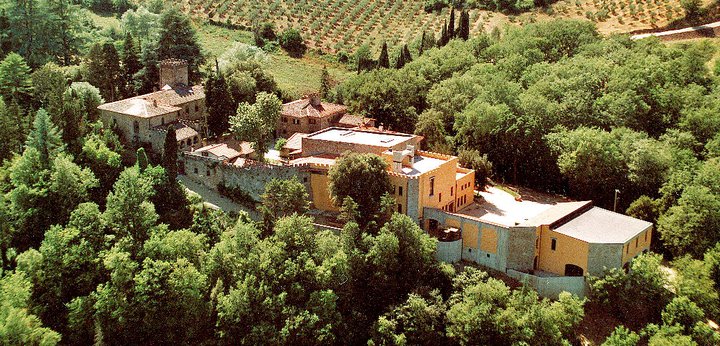
photo www.facebook.com/castello.di.querceto.greve/
Among the 33 producers who signed the 1924 founding act of the Consortium for the Protection of Typical Chianti Wine and Its Mark of Origin—the first consortium in Italian wine history—were Marianna Codacci François and Elvira Colombini François. The Castello di Querceto, owned by the François family since 1897, remains in the hands of the same family today, which has successfully upheld a deep-rooted Chianti tradition, offering labels with an increasingly captivating style.
The Granaio '22 from Melini Vigneti La Selvanella is a truly well-crafted Chianti Classico, whose greatest strength lies in its sheer drinkability. On the nose, its aromatic tones elegantly shift towards sweetness, highlighting a lush and fresh fruit character. On the palate, the wine develops in a structured and well-paced manner, transitioning from the softness of the initial sip to the vibrancy of the mid-palate, culminating in a crescendo-like finish.
The Melini cellars in Poggibonsi and Macchiavelli in San Casciano Val di Pesa represent Gruppo Italiano Vini within the Chianti Classico denomination, ensuring a consistent quality standard in their production. The history of this Poggibonsi-based brand is intertwined with the very story of Chianti Classico, as in 1860, Laborel Melini was the first to introduce the "strapeso" flask, resistant to the pressure of the machine-applied cork, a breakthrough that greatly contributed to the global success and diffusion of Chianti.
The Chianti Classico '21 from Le Fonti displays classic Chianti traits right from its aromas of small red berries and undergrowth. On the palate, the sip is sapid, continuous, and compelling in its drinkability. Equally well-executed is the Chianti Classico Riserva '20, which presents spicier aromatic notes and a structured, solid development.
The Chianti Classico '22 from La Montanina is a straightforward and immediately enjoyable wine, featuring a smooth and well-paced gustatory evolution, accompanied by aromas of ripe cherries and hints of wild herbs. The winemaking project of Bruno Mazzuoli captures, without unnecessary interventions, the essential characteristics of Gallo Nero wines, focusing on top-quality raw materials and ageing the wines exclusively in large wooden barrels. The cellar is located in Monti in Chianti, in the southern part of the UGA of Gaiole, bordering Castelnuovo Berardenga. Here, Sangiovese successfully blends the key features of both areas, resulting in a harmonious combination of vibrant acidity and generous structure.
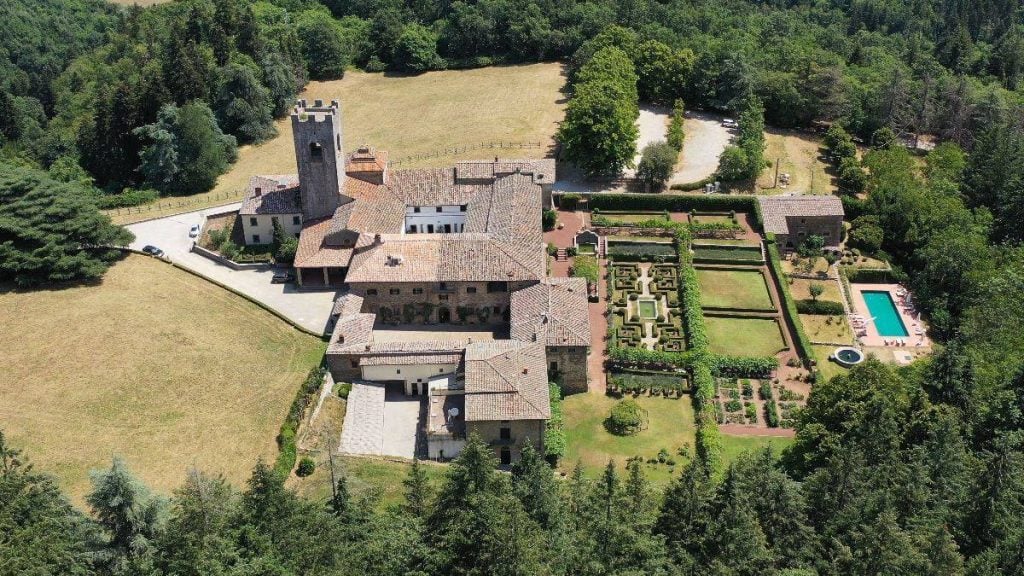
photo www.facebook.com/badia.coltibuono/
The Chianti Classico RS '22 from Badia a Coltibuono is a delightful wine with an irresistibly drinkable nature. The expressive purity of Badia a Coltibuono’s wines, the result of a refined and mature interpretative sensitivity, has long been the defining thread of the Stucchi Prinetti family’s winery, located in Monti, in the southern section of the UGA of Gaiole in Chianti. This signature style has elevated their wines—modern despite trends—to the status of true "classics" of the Gallo Nero denomination, with Sangiovese maintaining a remarkably authentic and consistent character.
A beautiful, fragrant fruit characterises the nose of the Chianti Classico Vaggiolata '21 from Monterotondo, which then shifts towards tones of undergrowth, alfalfa, and flint. On the palate, the wine is even more inviting, with an agile, dynamic, and flavourful progression.
The Chianti Classico '22 from Tenuta di Lilliano is reactive and juicy, offering a savoury and effortlessly enjoyable drinking experience. Tenuta di Lilliano, located in the UGA of Castellina in Chianti and owned by the Ruspoli family, draws inspiration from legendary figures such as Enzo Morganti and Giulio Gambelli, who have shaped the history of Chianti Classico. Today, the winery has embraced elements of modernity without losing its distinct Chianti identity. The result is a range of wines characterised by lush fruit and a well-balanced use of both small and large wooden barrels, ensuring a smooth yet complex drinking experience.
Sleek, fragrant, and easy-drinking, the Chianti Classico '22 from Villa Le Corti is a beautifully aromatic wine, entirely focused on pleasure, and truly well-executed. The Corsini family estate, based in the historic Villa Le Corti, is one of the key players in the UGA of San Casciano Val di Pesa. Their wines exhibit a classically inspired style, the result of a precise modern interpretation, where Sangiovese takes centre stage in lively, easy-drinking labels, in line with the finest productions of the Gallo Nero. The Corsini family also owns Tenuta Marsiliana in Maremma, where they produce exuberant, Mediterranean-style wines made from international varieties.
Also well-executed is the Chianti Classico '22 from Brancaia, which is aromatically refined and intriguing, delicate yet not lacking in substance on the palate, finding its strength in sheer drinkability. For over forty years, Brancaia, owned by the Swiss Widmer family, has been producing Chianti Classico wines of great elegance, always maintaining an overall sense of balance thanks to an absolute precision of execution. The winery is based in the UGA of Radda in Chianti, but also has vineyards in the northern part of the Castellina in Chianti area. Additionally, there is the Maremma estate of Poggio al Sasso, acquired in 1998, which produces wines that are naturally sunnier and more intense.
The Chianti Classico Riserva '21 boasts intense and well-defined aromas, with a fragrant, juicy, and flavourful palate. Rocca delle Macìe is today one of the most solid names in the Gallo Nero landscape. The estate consists of three Chianti properties (all within the UGA of Castellina in Chianti): the original estates, Sant'Alfonso and Le Macìe, acquired in 1973, the latter serving as the company’s headquarters, and Fizzano, acquired in 1984, which is at the heart of the Zingarelli family’s hospitality activities, with a relais and gourmet restaurant. Not to be forgotten are the Maremma estates, Campo Maccione, acquired in 1998, and Casa Maria, purchased in 2003.
The Chianti Classico Vallenuova '22 from Tolaini is all about sheer drinkability, a red wine with an inviting, juicy, and immediately enjoyable sip, perfectly capturing the essence of its typology. Tolaini, located between Pianella and Vagliagli, has become a leading producer in the UGA of Castelnuovo Berardenga. This project was launched in the late 1990s by Pierluigi Tolaini and is now carried forward with the same determination by his daughter, Lia Tolaini-Banville. She is actively involved in the wine world, not only managing the family estate but also operating an export and distribution business in the USA for Italian labels under the Banville Wine Merchants brand.

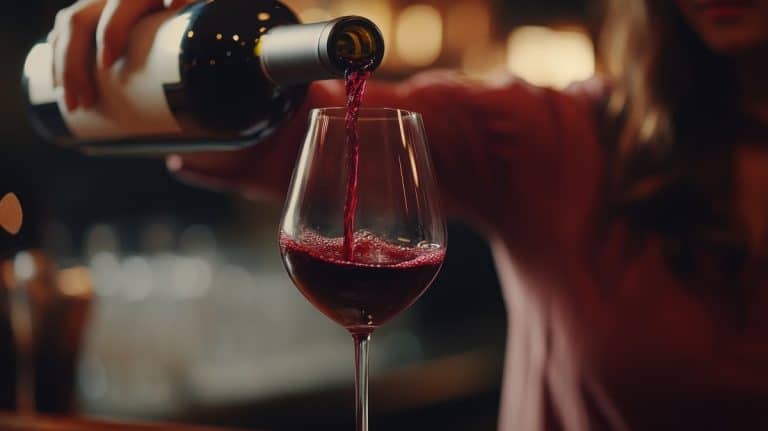
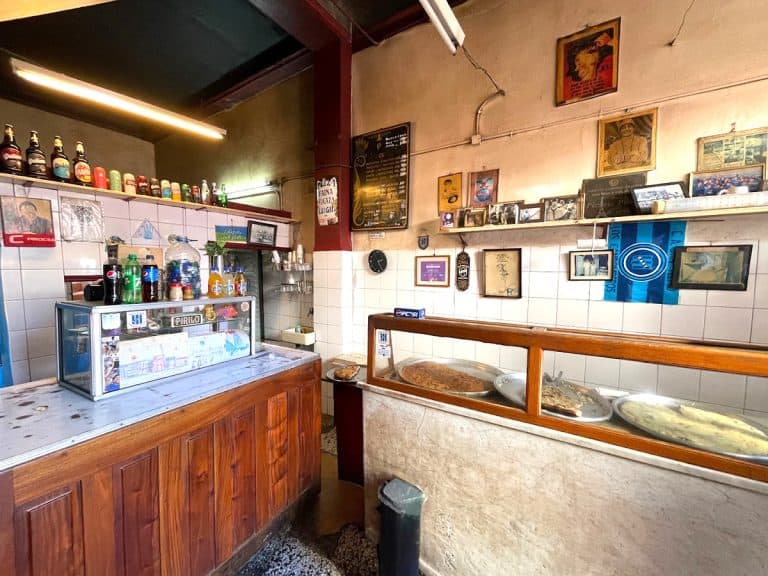 The Ligurian Focacceria in Buenos Aires hidden in the cradle of Tango
The Ligurian Focacceria in Buenos Aires hidden in the cradle of Tango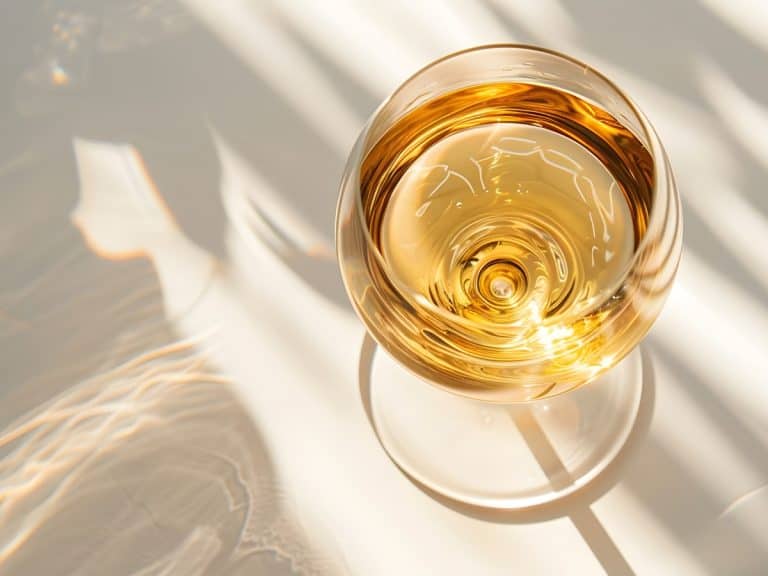 The new life of dessert wines: the era of serving them only at the end of a meal is over
The new life of dessert wines: the era of serving them only at the end of a meal is over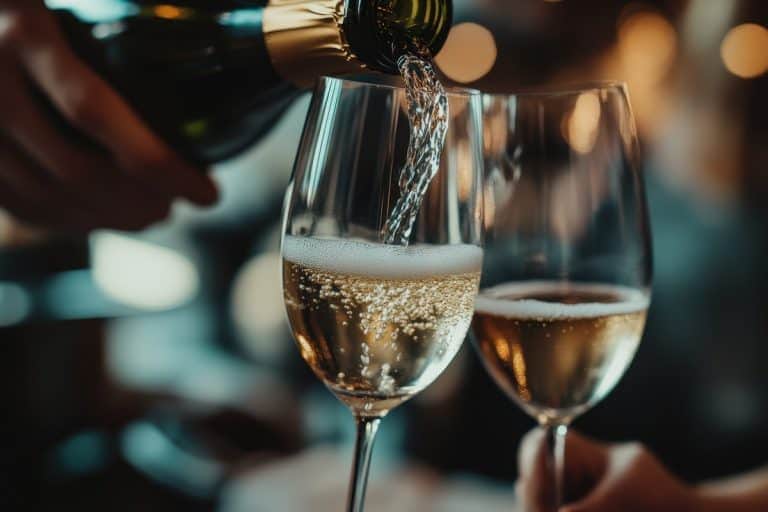 The 12 Conegliano-Valdobbiadene Prosecco Superiore wines with the best quality-price ratio selected by Gambero Rosso
The 12 Conegliano-Valdobbiadene Prosecco Superiore wines with the best quality-price ratio selected by Gambero Rosso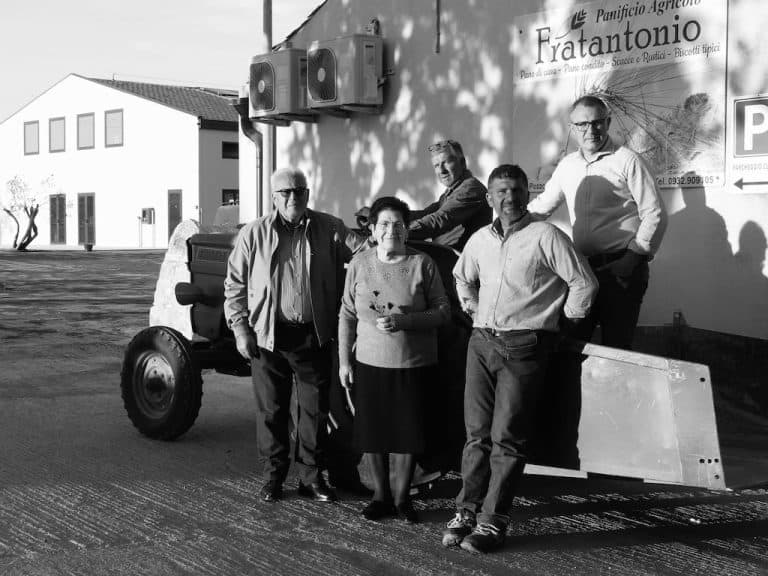 The story of the small agricultural bakery in Modica that preserves an ancient wheat variety at risk of disappearing
The story of the small agricultural bakery in Modica that preserves an ancient wheat variety at risk of disappearing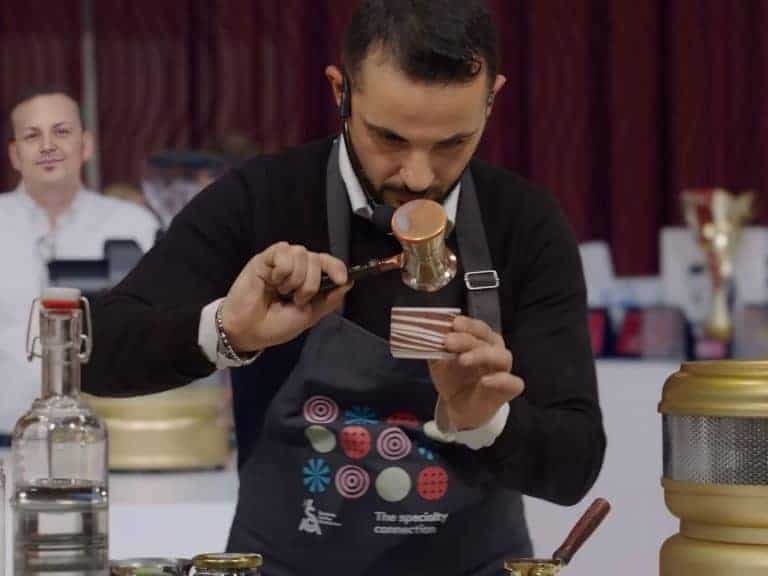 "Neapolitan coffee? It’s not the best. University students drink specialty coffee." The story of a great Italian roaster
"Neapolitan coffee? It’s not the best. University students drink specialty coffee." The story of a great Italian roaster
